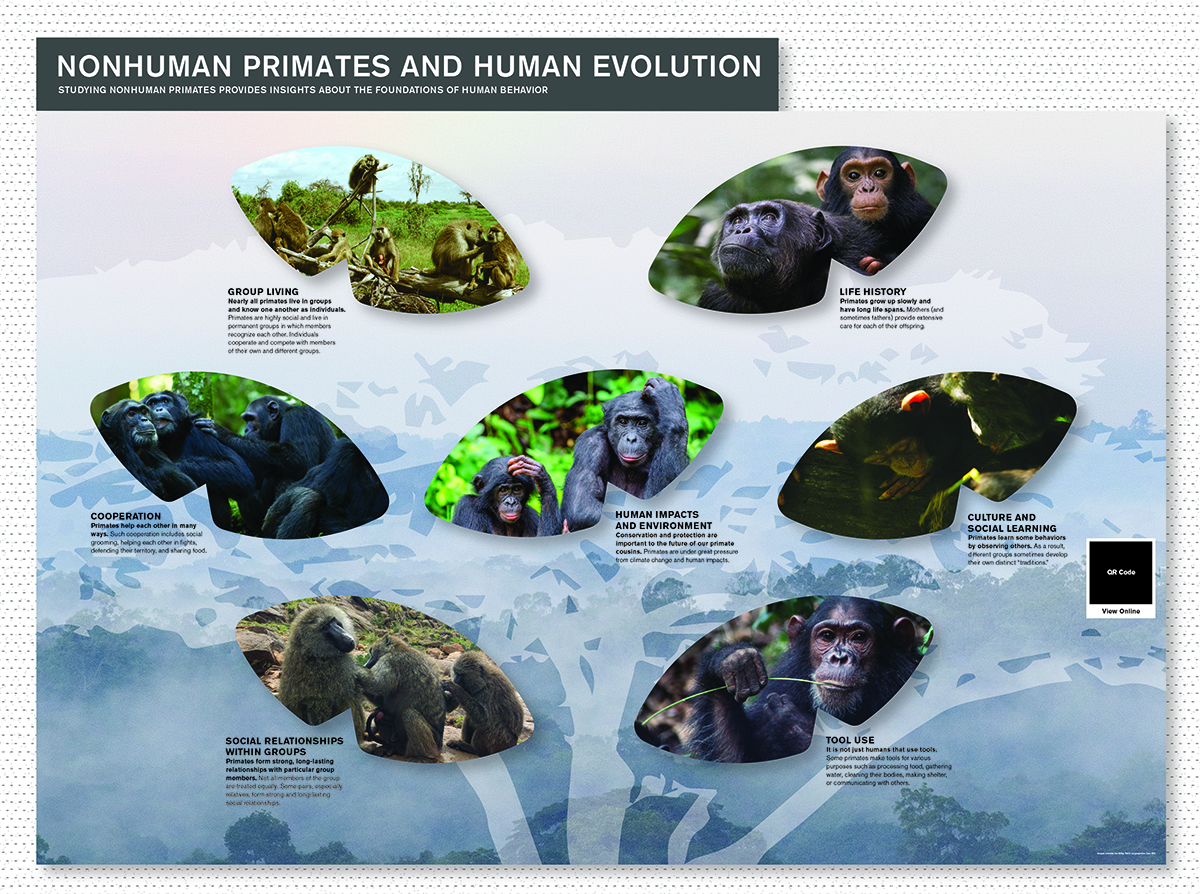You are on the second floor of the Walton Center for Planetary Health, in the offices of the Institute of Human Origins. This display is part of three large displays in the Marston Human Origins Education Gallery.
This is a large wall display that features seven images in a "leaf" motif mounted against a light image of a tree in the background.
Display Title: Nonhuman Primates and Human Evolution
Display subtitle: Studying nonhuman primates provides insights about the foundations of human behavior
Image one: A group of baboons sitting on a horizontal tree limb
Text: Group Living. Nearly all primates live in groups and know one another as individuals. Primates are highly social and live in permanent groups in which members recognize each other. Individuals cooperate and compete with members of their own and different groups.
Image two: An older chimpanzee face with a young chimpanzee on its back with its face looking straight out.
Text: Life History. Primates grow up slowly and have long life spans. Mothers (and sometimes fathers) provide extensive care for each of their offspring.
Image three: Three adult chimpanzees sitting closely with each other. One chimpanzee is "grooming" one of the other chimpanzees.
Text: Cooperation. Primates help each other in many ways. Such cooperation includes social grooming, helping each other in fights, defending their territory, and sharing food.
Image four: Two bonobos, an adult and a young individual, sit next to each other but their left hand is placed on top of their heads like they are scratching their heads in confusion.
Text: Human impacts and environments. Conservation and protection are important to the future of our primate cousins. Primates are under great pressure from climate change and human impacts.
Image five: An adult chimpanzee has a stick in its hand and is showing a young chimpanzee something.
Text: Culture and social learning. Primates learn some behaviors by observing others. As a result, different groups sometimes develop their own distinct "traditions."
Image six: Three baboons, large to small, are grooming each other in a line.
Text: Social relationships within groups. Primates form strong, long-lasting relationships with particular group members. Not all members of the group are treated equally. Some pairs, especially relatives, form strong and long-lasting social relationships.
Image seven: Single chimpanzee putting a piece of grass in its hand to its mouth.
Text: Tool use. it is not just humans that use tools. Some primates make tools for various purposes such as processing food, gathering water, cleaning their bodies, making shelter, or communicating with others.
